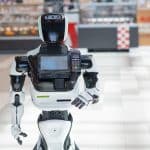Welcome, readers! You’ve probably heard the term ‘smart city’ by now, but have you ever wondered what exactly makes a city ‘smart’? In this article, we’re going to delve into one of the key components behind this intelligent urban evolution: sensors. These intricate devices, often associated with the Internet of Things (IoT), are becoming an integral part of urban infrastructure, profoundly transforming the way cities function and evolve. So, buckle up as we embark on our journey to understand how sensors are making cities smarter!
Understanding the Role of Sensors in Smart Cities
Before we start exploring how sensors are making our cities smarter, let’s first understand what these devices are and their role in urban settings. Sensors are essentially electronic devices that act as the ‘eyes’ and ‘ears’ of any IoT system, constantly monitoring and collecting data from their surroundings. In a smart city framework, they play a pivotal role in enabling real-time monitoring and management of urban systems and infrastructure.
Cela peut vous intéresser : How Are Smart Sensors Revolutionizing Home Energy Management?
Sensors embedded in public infrastructures like buildings, roads, and public transports, collect data related to various parameters such as temperature, humidity, light, noise, and traffic. This data is then processed and analyzed to generate insights that aid in decision-making, improving public services, and enhancing overall urban living experience.
The Magic of Data: Sensing the Pulse of the City
Sensors are quintessential data generators. Every second, they are busy collecting data, making them the lifeblood of smart cities. This data is not just about numbers and statistics, it’s like sensing the real-time ‘pulse’ of a city, offering invaluable insights into its workings and needs.
A découvrir également : What’s the Future of Digital Health Records?
Consider traffic management, for instance. Sensors placed on traffic lights or along roads monitor vehicle flow in real-time. This data is then used to optimize traffic signal timings, thus reducing congestion and improving travel times. Similarly, sensors on public transportation can provide data about passenger count, route efficiency, and vehicle health, helping city transport authorities improve their services.
The magic of data goes way beyond traffic management. Sensors in public parks can monitor soil moisture and weather conditions, helping maintain lush, healthy green spaces. Smart waste bins fitted with sensors can alert sanitation departments when they’re full, ensuring timely waste collection. Truly, sensors, with their relentless data collection, are revolutionizing city management.
IoT and Sensors: A Match Made in Urban Heaven
The IoT has played a pivotal role in propelling the deployment of sensors in urban settings. IoT, which essentially refers to interconnected physical devices that ‘talk’ to each other via the internet, relies heavily on sensors to collect the necessary data that keep this conversation going.
IoT platforms combine the data from various sensors, analyze it and then trigger the appropriate response. For instance, an IoT platform might take data from weather sensors and smart irrigation systems to schedule watering in public parks, thereby conserving water.
By enabling real-time monitoring and response, the IoT and sensors together bring about increased efficiency, energy conservation, and improved quality of life. From smart lighting that dims when no one’s around, saving energy, to smart parking that guides drivers to available spots, saving time and reducing frustration, IoT and sensors are truly a match made in urban heaven.
Smart Energy Management with Sensors
One of the most compelling applications of sensors in smart cities is in energy management. Energy is a critical resource, and its efficient use is paramount for sustainable urban living.
Sensors play a crucial role in smart grids, systems that use digital technology for two-way communication between utility providers and consumers. These grids use sensors to monitor energy flow and detect any faults or outages, allowing for rapid response.
Moreover, sensors in smart meters provide real-time data about energy use to both consumers and energy providers. For consumers, this means they can monitor their energy habits and make informed decisions to reduce consumption. Energy providers, on the other hand, can leverage this data to optimize energy distribution and even predict demand.
Monitoring Urban Health: Sensors to the Rescue
In an era where public health is a global concern, sensors offer a powerful tool for monitoring and managing urban health. From monitoring air quality to tracking disease outbreaks, sensors can play a crucial role in ensuring the well-being of city dwellers.
Air quality sensors, for instance, can monitor levels of harmful pollutants in real-time, providing valuable data that can be used to inform public health advisories, guide urban planning and even enforce environmental regulations.
Similarly, in the wake of the COVID-19 pandemic, smart thermal sensors have been deployed in public places for mass temperature screening, helping detect potential infections and containing the spread of the virus.
In the end, while we don’t have a crystal ball to predict exactly how the future of smart cities will unfold, one thing is clear: sensors are, and will continue to be, an integral part of this intelligent urban evolution. So, next time you walk down your city streets, remember that there are countless sensors working tirelessly, making your city smarter, one byte of data at a time!
Sensor Networks: Facilitating Public Safety and Security
Sensor networks are emerging as a significant component in ensuring public safety and security in smart cities. These networks of sensors, often combined with advanced artificial intelligence (AI) and machine learning algorithms, are playing crucial roles in various areas from crime prevention to disaster management.
For instance, sensors equipped with image recognition capabilities are being extensively used in surveillance systems across the city. These smart technologies can analyze video feeds in real time, detecting suspicious activities and alerting the authorities swiftly. This not only enhances the effectiveness of law enforcement but also acts as a deterrent to potential criminals.
Similarly, in disaster-prone urban areas, sensor networks can provide early warning signals. Sensors are deployed to monitor seismic activity, changes in water levels, and other indicators of natural disasters. This real-time data can alert relevant authorities and the public, giving them precious time to act and potentially saving lives.
These sensor networks also play a vital role in firefighting. Smart sensors can detect smoke or excessive heat and alert the fire department even before a fire breaks out. They can also guide firefighters by providing information about the intensity and spread of the fire, ensuring their safety and improving the efficiency of their operations.
The Future of Smart Cities: A Sensor-Driven Revolution
As we look to the future, it’s clear that sensors will continue to revolutionize the way our cities function and evolve. With advancements in technology, sensors are becoming even more sophisticated and their applications in smart cities more diverse.
One potential future development could be the integration of sensor networks with drones. Drones equipped with various sensors could serve numerous functions, from monitoring air quality at different altitudes to performing quick damage assessments after natural disasters.
Moreover, the development of energy-efficient sensors could enable their deployment in larger numbers, leading to even more comprehensive and accurate data collection. This could further enhance decision making, improve public services, and elevate the quality of life in urban areas.
Furthermore, as IoT devices and smart technologies continue to proliferate, we might see the emergence of ‘hyperconnected’ cities. In these cities, almost every element of the city infrastructure could be equipped with sensors and connected to the internet, enabling real-time monitoring and management on an unprecedented scale.
In conclusion, the integration of sensors and the Internet of Things is transforming our cities, making them smarter, safer, and more sustainable. From traffic management to waste management, from energy consumption to public safety, sensors are reshaping every aspect of urban living. As we continue to innovate and leverage these technologies, we can look forward to a future where smart cities deliver an ever-improving quality of life for all their inhabitants.











